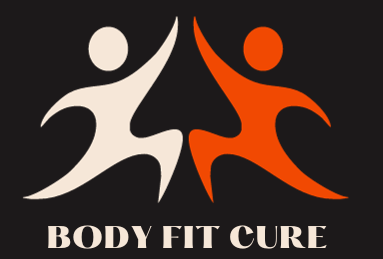Welcome to our article on cycle build health, where we explore the incredible benefits of cycling for your fitness and overall well-being. Cycling is not just a means of transportation or a fun hobby; it is an exercise that can transform your health and boost your fitness levels naturally.
Incorporating cycling into your routine can bring a multitude of positive changes to your body and mind. From burning calories and building strength to improving cardiovascular health and reducing stress, cycling has it all. So, let’s dive into the world of cycle building and discover how this activity can benefit you in more ways than one.
Key Takeaways:
- Cycling is a fantastic way to improve overall fitness and well-being.
- Regular cycling can boost cardiovascular health and help in weight management.
- Cycling is a low-impact exercise that reduces stress on joints.
- Adding cycling to your routine can enhance mental well-being and improve cognitive function.
- By incorporating cycling into your routine, you can enjoy the benefits of exercise while exploring the outdoors.
Embracing the Journey of Cycle Building for Enhanced Fitness
Embarking on the journey of cycle building is an exciting and rewarding experience. It involves setting goals, pushing your limits, and gradually enhancing your fitness levels through well-designed cycling workouts. Whether you are a beginner or an experienced cyclist, this section will guide you through the process of embracing the cycle building journey to achieve enhanced fitness. We will explore different training strategies, tips for maintaining motivation, and the joy of incorporating cycling into your daily life.
One of the key aspects of cycle building is setting specific and achievable fitness goals. These goals will give you something to work towards and help you measure your progress along the way. Whether you aim to increase your endurance, improve your speed, or tackle longer distances, having a clear goal in mind will structure your training and motivate you to keep pushing forward.
When it comes to cycle training, it’s important to find a routine that suits your fitness level and preferences. Start with shorter rides and gradually increase the duration and intensity as you build up your fitness. You can incorporate different types of rides, such as interval training, hill climbs, or long endurance rides, to challenge your body and improve your overall fitness.
Maintaining motivation is a crucial factor in the cycle building journey. There may be days when you don’t feel like cycling, but staying consistent with your training will lead to long-term progress. Surround yourself with a supportive community of cyclists, join group rides, or find a cycling buddy who shares your passion for fitness. These connections can keep you motivated, accountable, and make the journey more enjoyable.
One of the joys of cycle building is the freedom and exploration it offers. Use cycling as an opportunity to discover new routes, explore scenic landscapes, and connect with nature. It’s a chance to escape the hustle and bustle of daily life and rejuvenate yourself mentally and emotionally.
Essential Elements of Effective Cycling Workouts
To maximize the benefits of cycle building, it is important to structure your cycling workouts effectively. In this section, we will delve into the essential elements of effective cycling workouts.
Creating a balanced cycling routine:
One of the key factors in designing effective cycling workouts is creating a balanced routine. A balanced cycling routine includes a mix of different types of rides, such as endurance, interval, and recovery rides. Each type of ride serves a specific purpose in enhancing your fitness levels and improving overall performance.
Endurance rides:
Endurance rides are characterized by moderate intensity and longer distances. These rides are essential for building aerobic capacity and improving cardiovascular fitness. They help to increase your endurance levels and build a strong foundation for more intense rides.
Interval training:
Interval training involves alternating periods of high-intensity effort with periods of recovery or lower intensity. This type of training is effective for improving speed, power, and overall cardiovascular fitness. Interval workouts can be customized to suit your fitness level and goals.
Recovery rides:
Recovery rides are low-intensity rides that focus on active recovery and restorative benefits. These rides help to promote muscle recovery, reduce fatigue, and prevent overtraining. Incorporating recovery rides into your cycling routine is crucial for maintaining a healthy balance between training and recovery.
Intensity levels in cycle training:
Understanding intensity levels is key to designing effective cycling workouts. Varying the intensity of your rides allows you to target different energy systems and challenge your body in various ways. By incorporating both high-intensity rides and lower-intensity rides, you can maximize the benefits of your training and avoid plateauing.
Incorporating resistance training:
While cycling primarily targets the lower body muscles, incorporating resistance training can help to build overall strength and power. Resistance training exercises, such as squats, lunges, and kettlebell swings, can be included as part of your cross-training routine. Strengthening your upper body and core will enhance your cycling performance and help prevent imbalances in your musculature.
| Key Elements | Description |
|---|---|
| Balance | Create a balanced cycling routine that includes endurance, interval, and recovery rides. |
| Intensity | Vary the intensity levels in your training to target different energy systems and avoid plateauing. |
| Resistance Training | Incorporate resistance training exercises to build overall strength and prevent muscle imbalances. |
Cycle Build Health Benefits: Combining Enjoyment with Well-being

Cycle build health goes beyond improving physical fitness, offering a wide range of benefits that contribute to overall well-being. In this section, we will explore the various health advantages associated with cycle building, including cardiovascular improvements, mental health benefits, and stress reduction. We will also delve into the scientific evidence supporting these benefits and provide practical insights on optimizing your cycling routine for maximum results.
Cardiovascular Improvements
Cycling is a highly effective cardiovascular exercise that can significantly improve heart health. Regular cycling helps strengthen the heart and lower the risk of heart disease. It also increases blood flow and oxygen delivery to the muscles, improving overall cardiovascular efficiency. By incorporating cycle building into your fitness routine, you can enhance your endurance, stamina, and cardiovascular capacity.
Mental Health Benefits
Cycle building is not just beneficial for your physical health; it also has a positive impact on your mental well-being. Cycling releases endorphins, the feel-good hormones, which can elevate your mood and reduce symptoms of anxiety and depression. It provides a sense of freedom and escape from the stresses of everyday life, allowing you to clear your mind and experience a greater sense of mental clarity and relaxation.
Stress Reduction
One of the most significant benefits of cycle build health is stress reduction. Cycling provides an opportunity to disconnect from the demands of work and daily responsibilities, allowing you to focus on the present moment and enjoy the freedom of the open road. The rhythmic motion of cycling combined with the release of endorphins helps to alleviate stress and tension, promoting a sense of calm and emotional well-being.
By incorporating these physical and mental health benefits into your cycling routine, you can experience holistic well-being and find enjoyment in the process of improving your fitness levels.
Optimizing Nutrition and Recovery for Cycling Performance
Nutrition and recovery are key components that can significantly impact your cycling performance. Optimizing your nutrition not only fuels your rides but also promotes muscle recovery, enabling you to perform at your best.
When it comes to nutrition for cyclists, there are essential nutrients and hydration strategies that you should incorporate into your routine. These factors play a vital role in ensuring you have the energy and stamina to tackle long rides and recover adequately afterwards.
Here are some practical tips to optimize your nutrition for cycling:
- Pre-ride Nutrition: Fuel your body with a balanced meal or snack rich in carbohydrates and protein about 1-2 hours before your ride. This will provide sustained energy and aid in muscle recovery.
- During-ride Nutrition: Stay hydrated by drinking water or electrolyte-rich sports drinks throughout your ride. Consume easily digestible carbohydrates such as energy gels, bars, or fruits to maintain energy levels.
- Post-ride Nutrition: Replenish your body with a combination of carbohydrates and protein within 30 minutes after your ride. This helps to restore glycogen levels and promote muscle repair.
In addition to proper nutrition, recovery techniques are crucial for avoiding injuries and enhancing overall performance. Here are some recovery strategies to incorporate into your cycling routine:
- Rest and Sleep: Allow your body ample time to rest and recover between intense training sessions. Aim for 7-8 hours of quality sleep each night to support optimal recovery.
- Stretching and Foam Rolling: Perform stretching exercises and use a foam roller to alleviate muscle tightness and promote flexibility.
- Active Recovery: Engage in low-intensity activities such as gentle cycling, walking, or swimming to increase blood flow and facilitate recovery.
By optimizing your nutrition and implementing effective recovery techniques, you can enhance your cycling performance and take your rides to the next level. Remember to listen to your body and make adjustments to your nutrition and recovery routine as needed.
Next, we will conclude our exploration of cycle building and provide guidance on the next steps you can take to commit to a healthier lifestyle through cycling. Stay tuned!
Conclusion
In conclusion, committing to a healthier lifestyle through cycling is a powerful choice that can positively impact your fitness levels and overall well-being. By embracing the journey of cycle building and incorporating effective cycling workouts into your routine, you can experience a wide range of physical and mental health benefits.
Cycling offers a natural and enjoyable way to improve cardiovascular fitness, build strength, and increase endurance. The low-impact nature of cycling makes it suitable for people of all ages and fitness levels, making it a versatile exercise option.
To maintain your progress and continue reaping the benefits of your cycling routine, it is important to set new goals and continually challenge yourself. Whether it’s increasing your distance, conquering challenging terrains, or participating in cycling events, pushing your boundaries will keep you motivated and engaged.
As you continue on your cycle building journey, remember to listen to your body and prioritize recovery. Incorporate rest days into your routine and engage in activities that promote muscle recovery, such as stretching and foam rolling. Additionally, pay attention to your nutrition, ensuring you fuel your body with the right nutrients to support your cycling performance and enhance recovery.
By committing to a healthier lifestyle through cycling and taking the necessary steps to maintain your routine, you are paving the way for long-term fitness and well-being. So gear up, hit the road, and embrace the transformative power of cycling!
FAQ
What are the health benefits of cycle building?
Cycle building offers numerous health benefits, including improved cardiovascular fitness, increased muscle strength and endurance, weight loss, reduced stress levels, and enhanced mental well-being. Regular cycling also helps to improve bone density and joint mobility, boosting overall health and longevity.
How does cycling contribute to overall fitness?
Cycling is a low-impact exercise that engages multiple muscle groups and increases heart rate, making it an effective way to improve overall fitness. It helps to build leg strength, improve lung capacity, and boost cardiovascular endurance. Cycling also burns calories and contributes to weight management, making it an excellent choice for those looking to improve their fitness levels.
Can cycling help in weight loss?
Yes, cycling can be a great tool for weight loss. It is a low-impact exercise that burns calories and helps to build lean muscle. By incorporating regular cycling workouts into your fitness routine and maintaining a balanced diet, you can achieve effective weight loss results.
How often should I cycle to see results?
The frequency of your cycling workouts will depend on your fitness goals and current fitness level. As a general guideline, aim for at least three to four cycling sessions per week, with each session lasting 30 minutes to an hour. Consistency is key, so try to maintain a regular cycling routine for optimal results.
Can cycling help reduce stress?
Yes, cycling is an excellent activity for reducing stress. Physical exercise, such as cycling, stimulates the production of endorphins, which are natural mood-boosting chemicals. Additionally, cycling allows you to spend time outdoors, connecting with nature and enjoying the peacefulness of the surroundings, further promoting stress reduction.
Is cycling suitable for all fitness levels?
Yes, cycling can be adapted to suit all fitness levels. Whether you are a beginner or an experienced athlete, you can adjust the intensity, duration, and resistance levels of your cycling workouts to match your fitness level. Start gradually and build up the intensity and duration over time as your fitness improves.
How can I incorporate cycling into my daily life?
There are several ways to incorporate cycling into your daily life. Consider cycling to work or school instead of driving, using a stationary bike during your lunch break or after work, or planning cycling outings with friends or family on weekends. Find opportunities to cycle in your routine and make it a regular part of your lifestyle.
What equipment do I need for cycling?
The essential equipment for cycling includes a well-maintained bicycle, a properly fitted helmet, comfortable cycling clothing, and supportive footwear. Depending on your preferences and cycling goals, you may also consider accessories such as cycling gloves, sunglasses, and water bottle holders.
Are there any safety tips I should keep in mind while cycling?
Safety is paramount when cycling. Always wear a helmet to protect your head in case of accidents. Obey traffic rules and signals, use hand signals to communicate your intentions, and stay aware of your surroundings. Ensure your bicycle is well-maintained, including proper tire inflation, working brakes, and functioning lights if cycling at night.
Can cycling help to improve my mental well-being?
Yes, cycling can positively impact mental well-being. The physical exercise, fresh air, and connection with nature that cycling provides help to reduce stress, improve mood, and enhance mental clarity. Cycling can be a form of meditation, allowing you to focus on the present moment and gain a sense of peace and mental rejuvenation.



